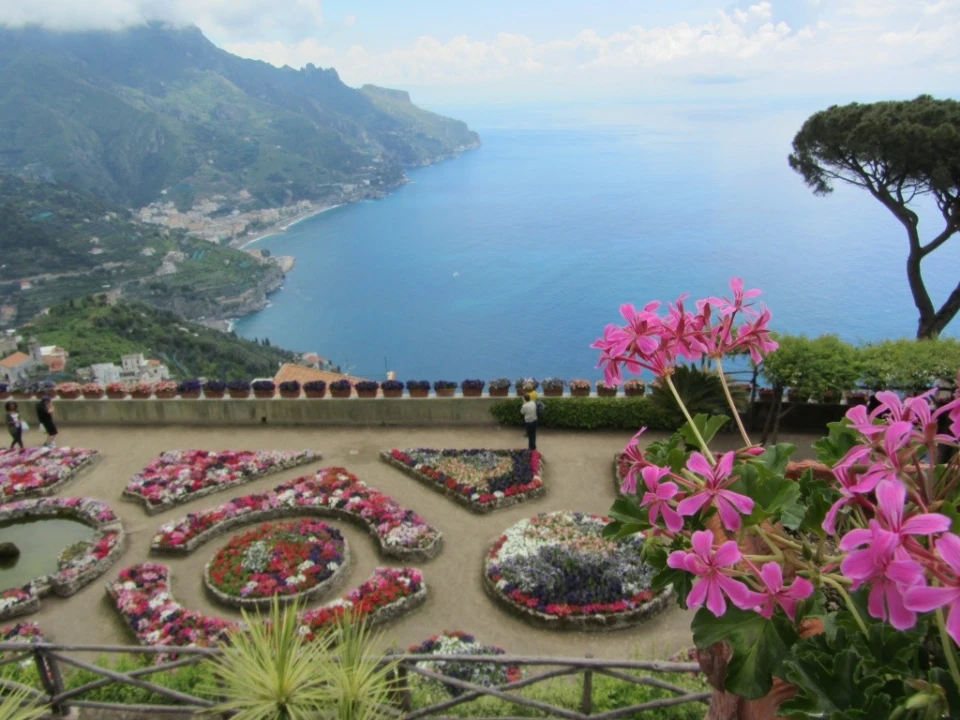Villa Rufolo is a building in the historic center of Ravello (Salerno, Campania), whose original structure dates back to the thirteenth century, with large nineteenth-century alterations. Eroded by time and neglect, it was partially restored thanks to the valuable assistance of the enterpreneur Scot Francis Neville Reid, expert in botany and ancient art, who owned it in the nineteenth and twentieth centuries.
The original model, perfect and unique synthesis of Arabic, Sicilian and Norman style, was altered by seven-nineteenth-century modifications, including the addition of the cloister (XVIII century) and of romantic gardens. You enter the villa through an arched opening in the "Entrance tower" and after a short avenue you come to a clearing dominated by "Major Tower", which points out on the terraces overlooking the Amalfi Coast and the Gulf of Salerno, with rich gardens almost always in bloom.
The gardens
A nineteenth-century tree-lined avenue leads to the garden of Villa Rufolo, also known as the Garden of the Soul. Dating back to the thirteenth century, with traces of the Middle Ages, the garden is on two levels, which owe to Reid their current design. As well as introducing a number of exotic species, Reid built the irrigation system. To solve the water problem, he settled an agreement with the City Council of the City of Ravello and built at his own expense an aqueduct that carried water from the district of the Tabernacle to the Bishopric square of Ravello, where it still feeds a public fountain. Reid pledged to perpetual maintenance of both.
The care of the gardens was then entrusted to Louis Cicalese. The species then present were many native and exotic, with a substantial presence of roses, especially the “Dijon” rose, many of which are now almost completely disappeared.
Over time, the garden suffered damages, especially in ‘900: from the confiscation by the British during the war to various natural phenomena, like the storm that struck in 1951 on the coast, up to the construction of the road in 1955 that destroyed the top of the garden.
The gardens today
The gardens overlook East on the landscape, through the Belvedere. Along the northern side, there are the remains of Balnea, an area in antiquity destined to spa treatments and only recently re-emerged thanks to the latest archaeological excavations. At the foot of the ladder that leads to the lower gardens, there is the turkish bath, where there are clearly visible remains of water pipes and the intact domed ceiling. Down the route through the gardens you reach the buildings of the lower house and the Moorish cloister.
Among the many plant species found there are the stone pine (Pinus pinea), the common cypress (Cupressus sempervirens), the large-leaved lime (Tilia platyphyllos), and hydrangeas.
Richard Wagner
In May 1880, the famous composer Richard Wagner (1813-1883), visiting Ravello, was impressed by the garden of Villa Rufolo and inspired by it for the scenery of Parsifal; he imagined the medieval tower sink into nowhere to become an enchanted garden, the tropical plants to take the form of beautiful girls, and finally the whole garden to turn into a desert in the moment in which Parsifal kills the sorcerer Klingsor.




